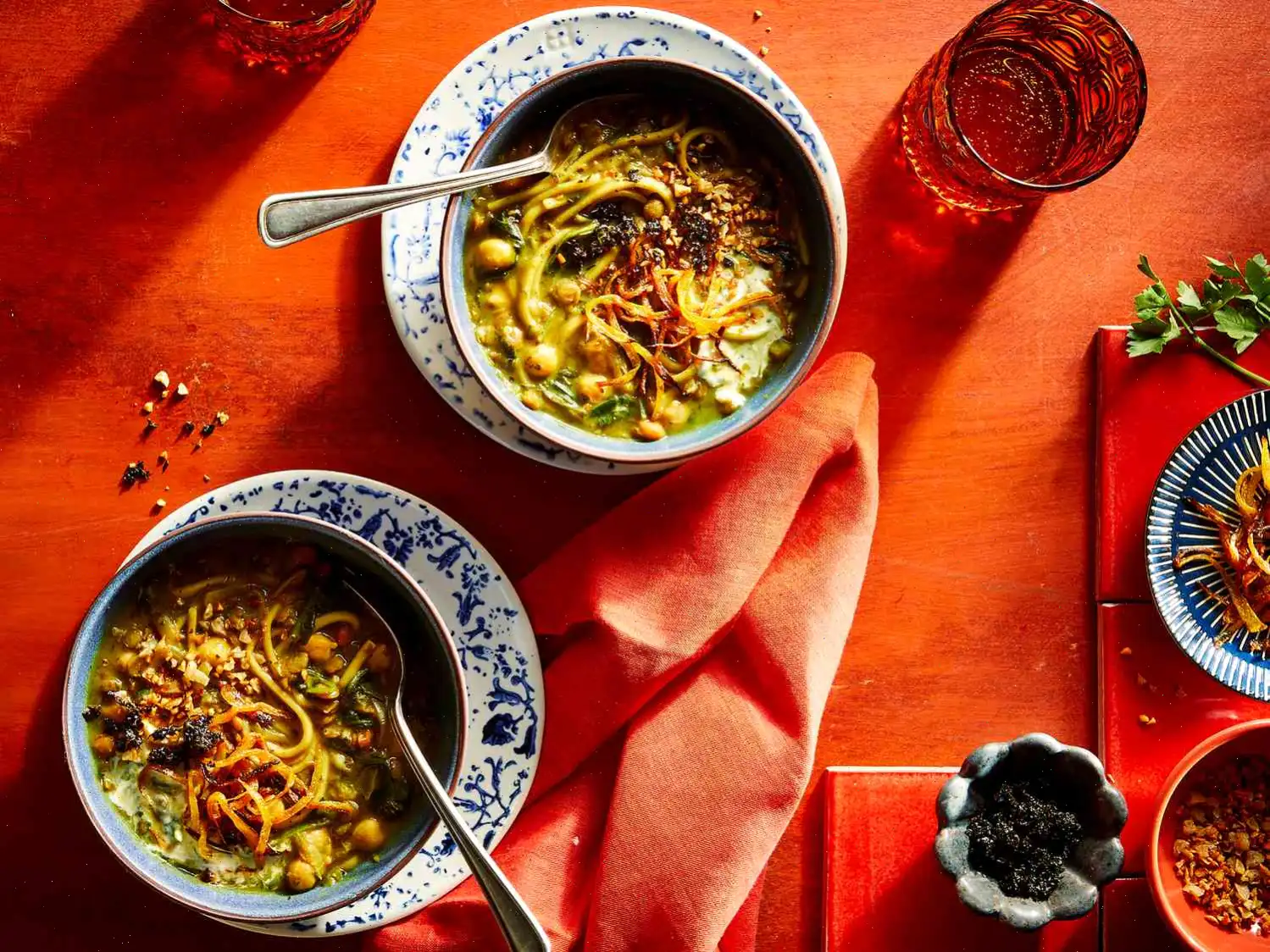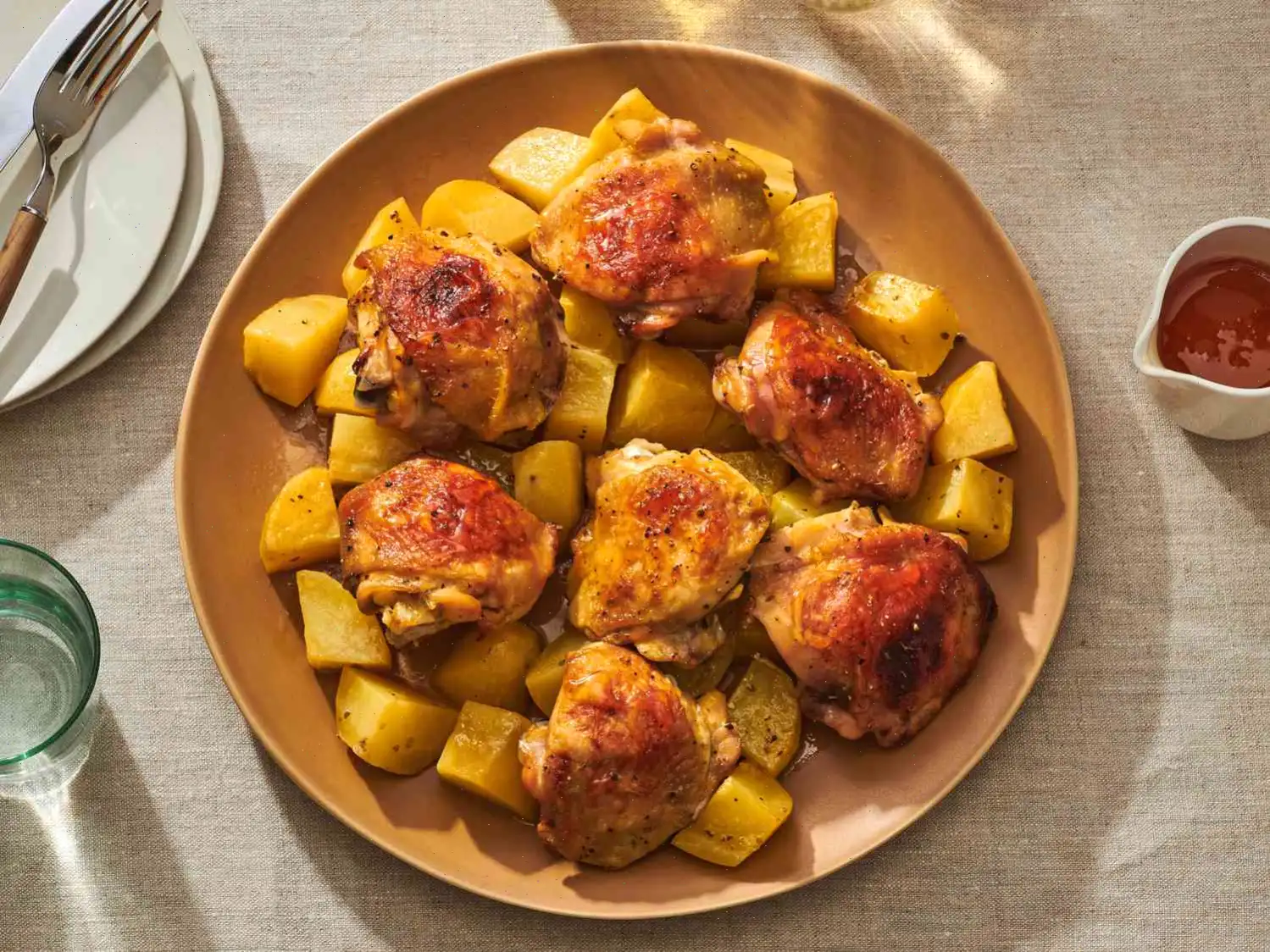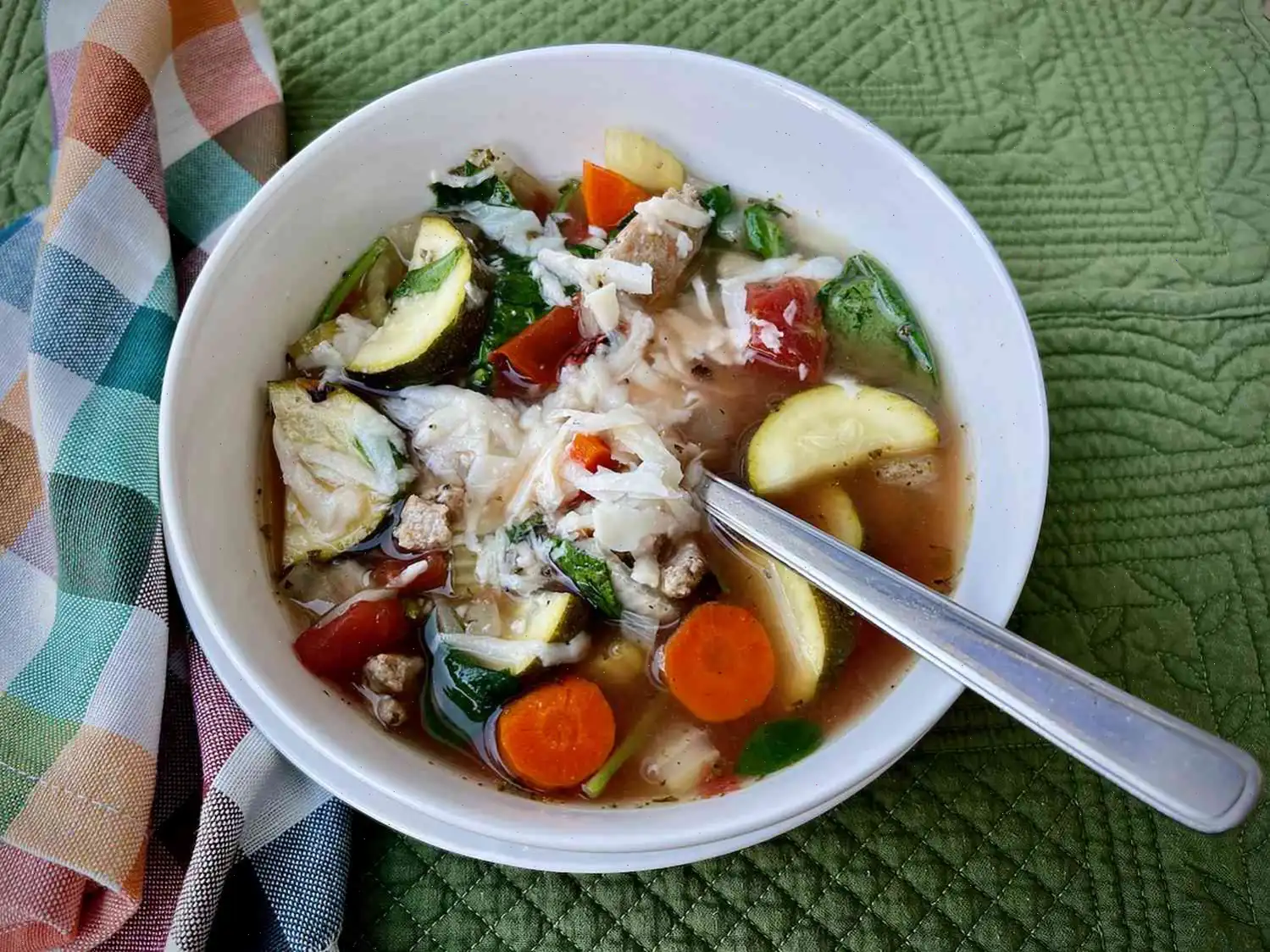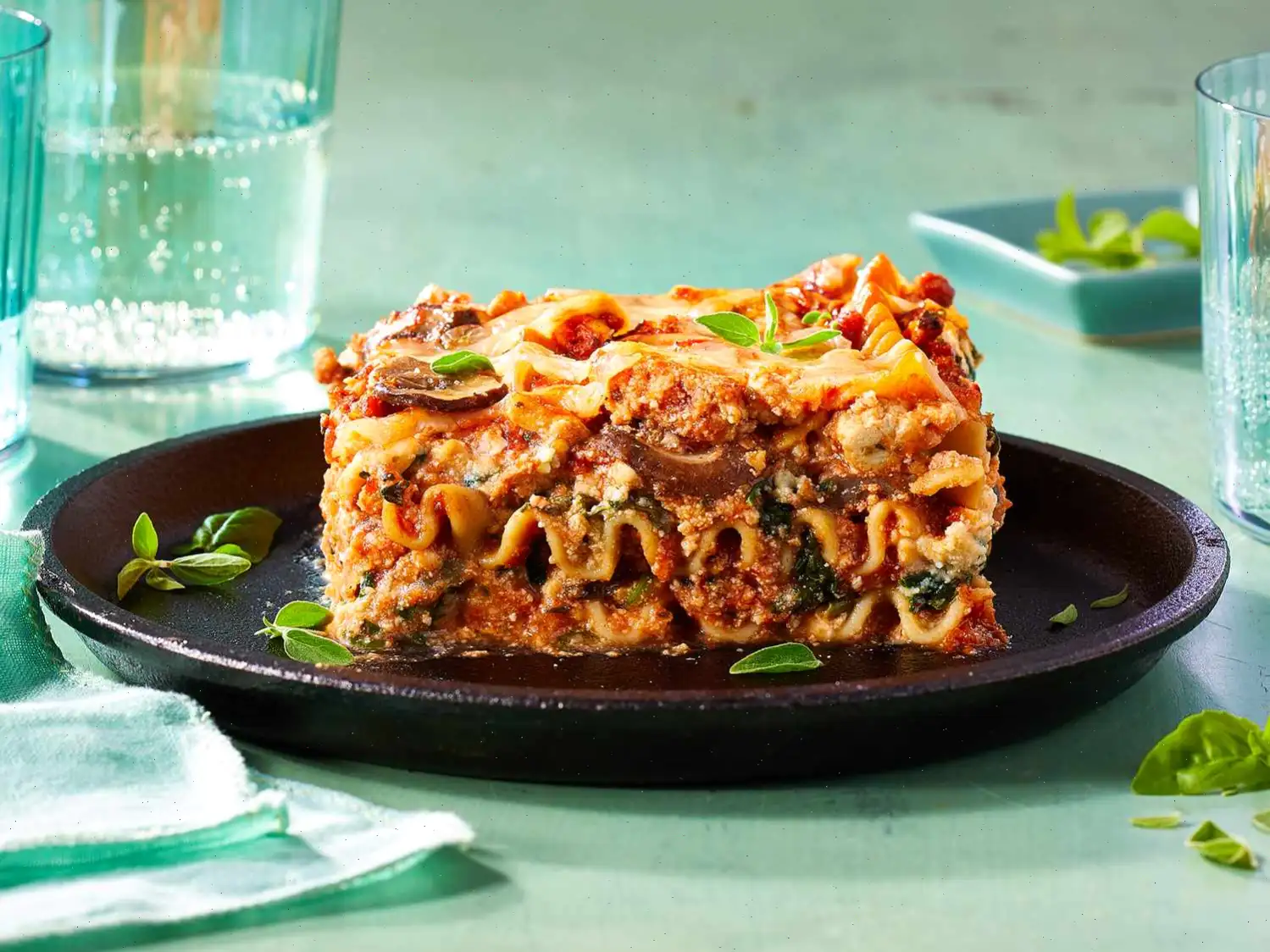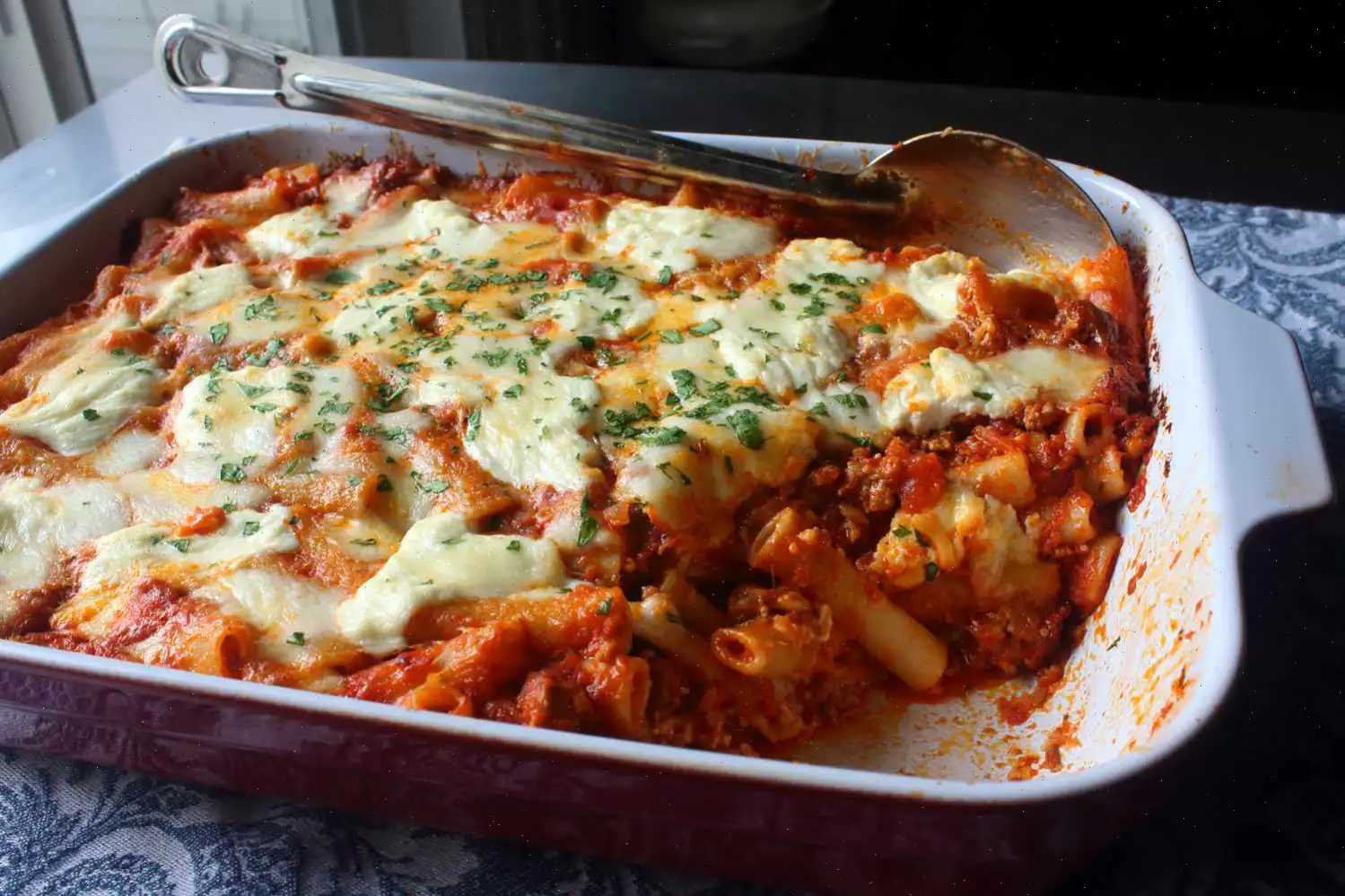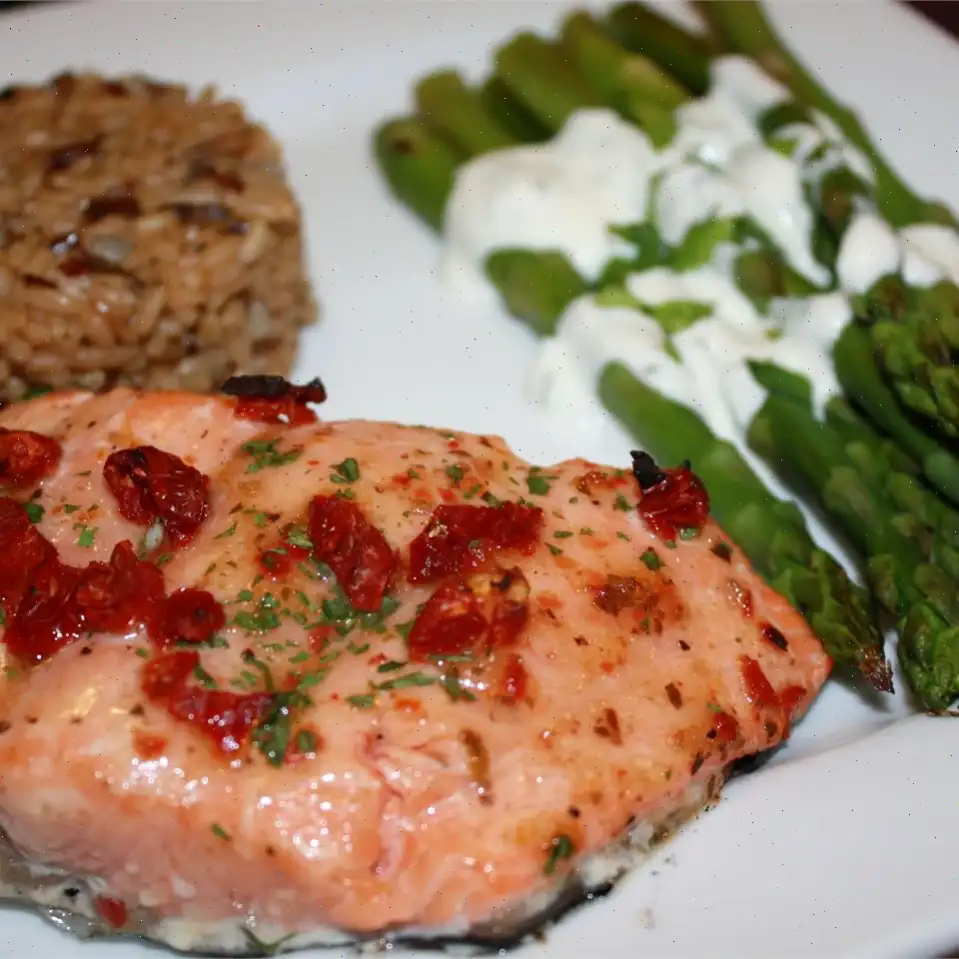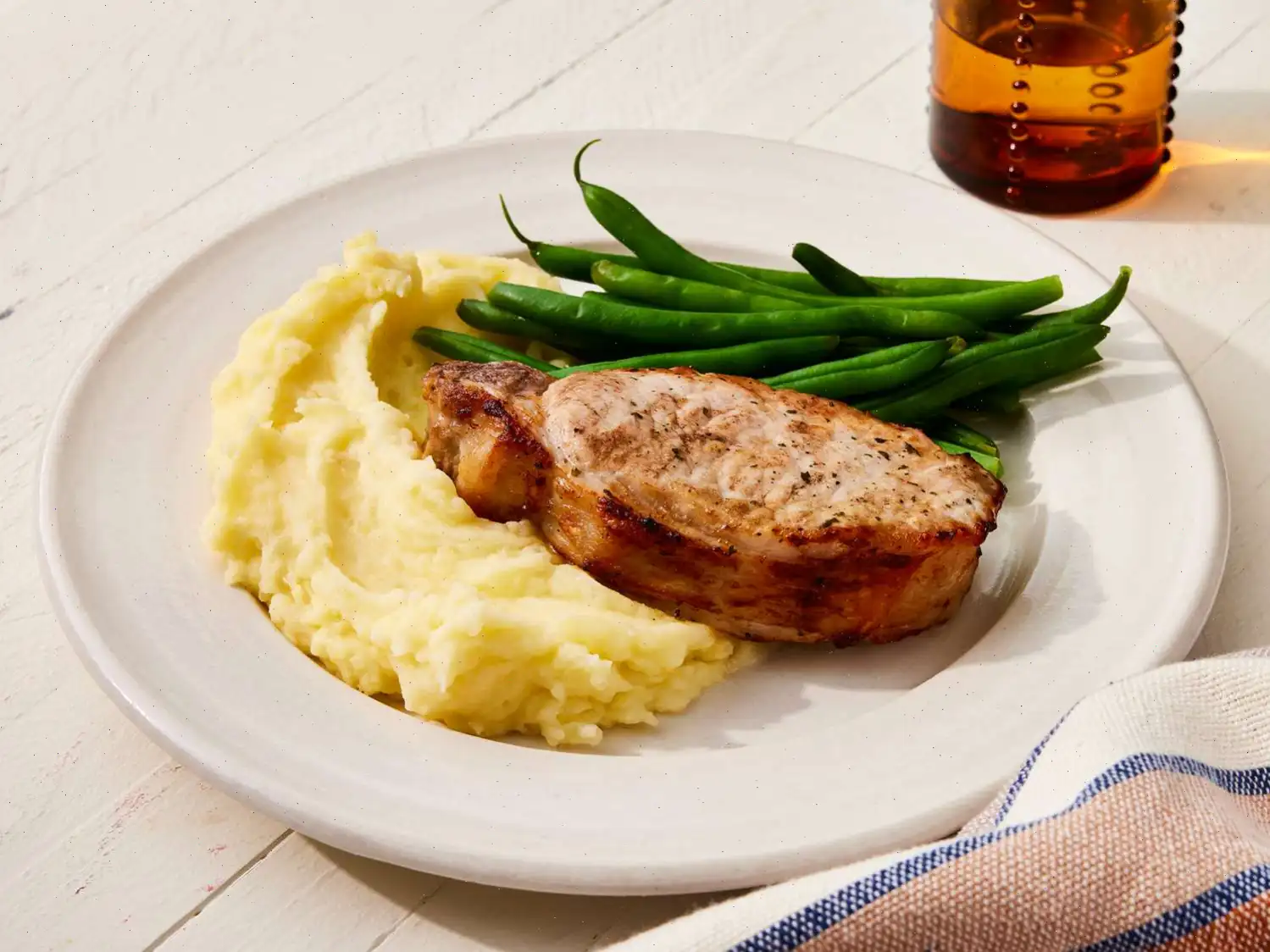
Ash Reshteh Recipe
Ingredients
- 3 large onions, divided
- 9 tablespoons vegetable oil, divided
- 2 tablespoons ghee or butter
- 3 cloves garlic, minced
- 6 tablespoons dried mint, divided
- 2 teaspoons turmeric, divided
- 1 1/2 teaspoons kosher salt, plus more to taste
- 9 cups plus 1/3 cup water, divided
- 1 (15-oz.) can chickpeas, drained and rinsed
- 1 (15-oz.) can pinto beans, drained and rinsed
- 3/4 cup green lentils
- 6 cups fresh spinach
- 1 1/2 cups chopped fresh parsley
- 1 cup chopped fresh cilantro
- 2 tablespoons flour
- 6 ounces reshteh or fettuccine
- 1 bulb garlic, cloves peeled and minced
- 3 tablespoons kashk or Greek-style yogurt
Directions
- Thinly slice 2 onions. Heat 2 tablespoons vegetable oil and ghee in a large pot over medium heat. Add sliced onions and cook, stirring occasionally, until golden brown, about 15 minutes.
- Add minced garlic and cook, stirring frequently, for about 2 minutes.
- Stir in 1 tablespoon dried mint, 1 1/2 teaspoons turmeric, and salt.
- Add 8 1/2 cups water, chickpeas, pinto beans, and lentils. Increase heat to medium-high and bring to a simmer.
- Stir in spinach, parsley, and cilantro. Return the mixture to a simmer and cook over low heat, covered, until the lentils are tender, about 30 minutes.
- Meanwhile, heat 2 tablespoons vegetable oil in a small saucepan. Add 2 tablespoons dried mint and cook until fragrant, about 2 minutes. Stir the mint into the soup and adjust seasoning to taste.
- In a small bowl, mix together flour and 1/3 cup water, then add it to the soup. Increase heat to medium. Add reshteh (or fettuccine) and simmer uncovered, stirring occasionally, until the noodles are tender and the soup has thickened, about 12 minutes.
- For the toppings, slice the remaining onion. Heat 2 tablespoons vegetable oil in a skillet over medium-high heat. Add the onion and cook, stirring occasionally, until golden brown, about 10 minutes.
- Stir in the remaining 1/2 teaspoon turmeric and cook for an additional minute. Transfer the onion mixture to a plate.
- Reduce the heat to medium. Stir the minced garlic bulb into the skillet and cook, adding more oil if necessary, until golden and crispy, about 3 minutes. Transfer the garlic to a bowl.
- Add the remaining 3 tablespoons dried mint and 3 tablespoons vegetable oil to the skillet. Cook over medium heat, stirring, until fragrant, about 2-3 minutes. Transfer the sauted mint to a bowl using a slotted spoon.
- In a small bowl, combine kashk and the remaining 1/2 cup water. Drizzle the kashk mixture over the soup when serving.
- Top each serving of soup with the sauted onion, crispy garlic, and fried mint.
Notes
- Reshteh: Look for thin flour noodles in Persian or Middle Eastern markets. If unavailable, you can substitute with fettuccine and add 1/2 teaspoon of salt in Step 3.
- Ghee: A type of clarified butter commonly used in Middle Eastern and South Asian cuisine. If you don't have ghee, you can substitute it with butter.
Nutrition Facts (per serving)
- Calories: 564
- Total Fat: 28g (36% Daily Value)
- Saturated Fat: 6g (31% Daily Value)
- Cholesterol: 11mg (4% Daily Value)
- Sodium: 825mg (36% Daily Value)
- Total Carbohydrate: 63g (23% Daily Value)
- Dietary Fiber: 11g (38% Daily Value)
- Total Sugars: 8g
- Protein: 19g (38% Daily Value)
- Vitamin C: 37mg (41% Daily Value)
- Calcium: 215mg (17% Daily Value)
- Iron: 8mg (46% Daily Value)
- Potassium: 959mg (20% Daily Value)

Origin and History
Ash Reshteh is a beloved Persian dish with a rich history, dating back centuries. Its origins are deeply rooted in the culinary traditions of Iran, where it has long been a staple in Persian homes. The dish is traditionally associated with celebrations, especially Nowruz, the Persian New Year, symbolizing renewal, prosperity, and abundance. Ash Reshteh is more than just a soupits a representation of Persian hospitality and the importance of family gatherings, often enjoyed during large meals where the focus is on communal sharing.
Regional Variations
Although Ash Reshteh is popular across Iran, its preparation can vary by region. In northern Iran, for example, it is often made with more greens, reflecting the abundance of herbs in that regions cuisine. Some areas may also add other types of beans or replace certain herbs, depending on what is locally available. Despite these variations, the core elements of Ash Reshtehbeans, herbs, noodles, and kashk (fermented whey)remain consistent, creating a flavorful and hearty dish that is comforting in any season.
Difference from Similar Dishes
While Ash Reshteh shares similarities with other Middle Eastern and Central Asian soups, particularly those made with legumes and herbs, its distinctive feature is the inclusion of reshteh, a type of Persian noodle, which sets it apart from other "ash" dishes. This noodle-based soup is often richer and heartier than other soups like lentil soup or chickpea soup, owing to the combination of noodles, beans, and greens, making it a filling and complete meal. Additionally, the use of kashk (fermented whey) adds a tangy depth of flavor, further distinguishing Ash Reshteh from its counterparts.
Where Ash Reshteh Is Typically Served
Ash Reshteh is often served in Persian homes during major holidays like Nowruz and Yalda (the winter solstice), but it is also a favorite for casual family dinners. It is commonly enjoyed during colder months due to its warming and hearty nature. In addition to home settings, you may find it in Persian restaurants, especially those specializing in traditional comfort food. It is typically served with toppings such as crispy fried onions, garlic, mint, and a drizzle of kashk, adding both texture and flavor to the rich, herby soup.
Interesting Facts About Ash Reshteh
- Traditionally, Ash Reshteh is made with reshteh, thin flour noodles that are a staple in Persian cuisine. These noodles are essential for giving the soup its signature texture and heartiness.
- The dish is often vegetarian, making it a great option for those seeking plant-based meals. The combination of beans, lentils, and herbs offers a nutritious source of protein and fiber.
- One of the key ingredients in Ash Reshteh is kashk, a fermented whey product that gives the soup a creamy, tangy flavor. Its a common ingredient in Persian cuisine, adding depth to many dishes.
- Ash Reshteh is not just a dish; its a representation of Persian culture. It symbolizes prosperity, community, and the bounty of nature, making it a meaningful meal during festive occasions.
Conclusion
Ash Reshteh is much more than a simple soup. It is a celebration of Persian culture, offering a delicious mix of legumes, herbs, noodles, and spices. Its regional variations and deep cultural significance make it an essential part of Iranian culinary heritage. Whether enjoyed during a festive occasion or as a comforting meal at home, Ash Reshteh provides a heartwarming taste of Persian tradition.
You can listen to this recipe in AI audio format. Simply click the play button below to listen to the content in a format that suits you best. It’s a great way to absorb information on the go!
FAQ about Ash Reshteh Recipe
Comments
Mark Davis
03/05/2025 01:27:53 AM
This meal was incredibly tasty. We adored the vibrant flavors of the herbs and the abundance of protein in a vegetarian dish. It was also satisfying and nourishing. We will definitely be preparing this dish again.
Jason Lewis
10/27/2024 02:32:16 PM
I tried this recipe last night that I found in a magazine. I had to make a few substitutions like using fresh mint instead of dry, regular butter instead of ghee, and spaghetti instead of the recommended pasta. But despite these changes, the dish turned out amazing! I doubled the recipe and replaced some of the water with homemade lamb stock. My tip is to remember to season according to your taste - it can make a huge difference in bringing out the flavors of the dish. If you're unsure, you can always provide salt at the table for everyone to adjust as needed. I paired the dish with a flavorful cilantro-lime chutney made with cilantro, mint, Serrano pepper, jalapeño, ginger, shallot, lime, salt, and olive oil. Additionally, I mixed some of the chutney into sour cream for an extra kick. As a side, I made Claire Saffitz's sour cream chive rolls with a few tweaks: I infused the butter with saffron, whole coriander seeds, and curry powder, used ricotta instead of sour cream, and added the chutney in place of chives.


